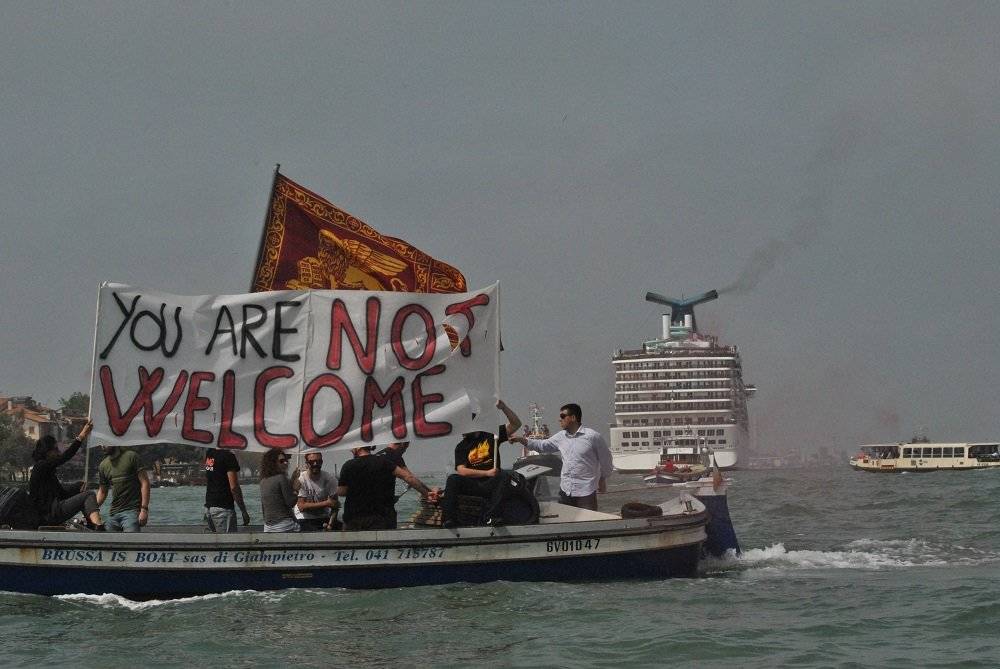Accidents Sparks Venice Ship Controversy
In the past years, cruise industry officials assured the public that guiding tugboats and technology would provide for a safe docking onto the busy Giudecca Canal. Yet, the recent collision proves that this is not necessarily the case.
"The MSC ship had an engine failure, which was immediately reported by the captain," said Davide Calderan, the head of one of the tugboats accompanying the cruise ship, according to AFP and Italian media. The tugboats tried to guide the cruise liner in safely, which holds more than 2,600 people, but were not strong enough to do so successfully.
The local port authority for Venice told CNN its priority on Sunday was managing the accident, but that from tomorrow on its goal is to "finally create a solution to the traffic of large ships in Venice."
"What happened in the port of Venice is confirmation of what we have been saying for some time," Italy's environment minister Sergio Costa tweeted. "Cruise ships must not sail down the Giudecca. We have been working on moving them for months now and are nearing a solution."
Jane Da Mosto, an environmental scientist who heads We Are Here Venice, which looks to ban cruise ships says, "It worries me because it's something that could've happened so many other times, and could happen again today."
This accident has re-sparked the debate over these large vessels. Local Venetians are saying "enough is enough," and that the accident was a "wake-up call." Members of "No grandi navi (No big ships)" movement have begun to protest in front of the large MSC Opera cruise ship, which crashed earlier that morning, into the fragile city.
However, the big ships, which sail through the lagoon and the Giudecca Canal upon docking are also a key factor for a large portion of tourism in the city, as they bring close to two million visitors a year.
Following Sunday's accident, Italy's transport minister, Danilo Toninelli, said the government is "close" to a solution to protect both the lagoon and tourism.
A plan to divert large cruise ships away from St Mark’s basin and the Giudecca canal and towards the Vittorio Emanuele canal was drawn up by local authorities four years ago. “And in that time there has been no response (from the national government),” said Paola Mar, Venice tourism chief. “Our message is clear enough, now.”
“Today’s accident at the port of Venice shows that the large vessels should no longer pass through the Giudecca,” Danilo Toninelli tweeted. “After so many years of inertia, we are finally close to a definitive solution to protect both the lagoon and tourism.”
In addition to the big ships crowding waterways, and blocking views, they also create waves that risk damage to the city's buildings and infrastructure. Environmentalists have long claimed that waves caused by the cruise ships have eroded the underwater supports of buildings and polluted the waters.
The government, as mentioned earlier, is close to finding a solution. It is unclear, however, whether the solution would mean cruise ships of all sizes being banned from the canal or not.
Overall the startling accident on Sunday has re-kindled the topic of how to address cruise ships in Venice, hopefully this time to draw a permanent solution.









































i-Italy
Facebook
Google+
This work may not be reproduced, in whole or in part, without prior written permission.
Questo lavoro non può essere riprodotto, in tutto o in parte, senza permesso scritto.